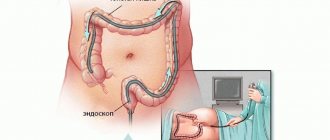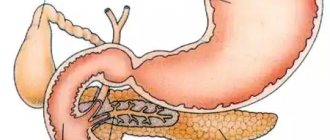- Methods for treating eating behavior
Eating disorders manifest themselves in the form of vomiting, anorexia, bulimia, overeating, and loss of appetite. With a long-term course of the pathological condition, the patient is diagnosed with serious complications, including death. Adolescents and young adults are at risk of developing pathologies. The process of treating diseases is complicated by the fact that the patient refuses to believe that he is sick. Most of them hide the symptoms of the pathological condition.
Problems with food perception
Eating disorders are a group of psychogenic diseases accompanied by an inadequate attitude towards food, one’s body and physical activity.
The main indicator is a pathological relationship with food. In this case, a person may experience uncontrolled overeating or, conversely, refusal to eat. Another option is to eat only certain types of foods.
The most common types of the disorder are anorexia nervosa and bulimia. But there are other forms:
- psychogenic overeating;
- drankorexia - replacing food with alcohol;
- orthorexia – pathological desire for proper nutrition;
- nonspecific eating disorder;
- pregorexia – eating disorder in pregnant women;
- allotriophagy – absorption of inedible objects. These could be nails, soil, pieces of wood;
- selective nutrition - preference for a certain type of food. The selection criterion can be anything – shape, color, type. At the same time, other products are completely rejected.
Whatever the form of the disorder, it is accompanied by mental imbalance. The patient is in a state of anxiety, excitability or apathy, and is capable of falling into depression. In some cases, self-rejection is observed, that is, dissatisfaction with one’s body, as well as self-flagellation, for example, exhausting physical activity after a regular portion of food.
An inadequate relationship with food causes physiological problems. Among them are disorders of the gastrointestinal tract, urinary system, osteoporosis, anemia, vitamin deficiencies, and mineral deficiency. In severe cases, food pathologies cause irreversible processes in vital organs and lead to death.
Eating disorders are a problem primarily for women, and not only for young and middle-aged women. About 13% of them are women over 50. But men are also not protected from this scourge. It has been established that 35% of the stronger sex have such disorders.
Therapy for kinorexia
In order for a doctor to be able to make a final diagnosis of “bulimia nervosa,” the following signs must be present in a comprehensive manner:
- attacks of painful gluttony occur regularly, from 2 times a week for more than 3 months;
- the patient feels a strong craving for food, which can be compared to anxiety;
- fear of obesity, constant dissatisfaction with the state of one’s body;
- using all possible methods to help prevent excess weight.
Experts unanimously state that treatment for bulimia should have a comprehensive approach and be carried out exclusively with the participation of a doctor. The general treatment plan includes the following types of therapy:
- psychotherapy;
- psychocorrection;
- pharmacotherapy.
As a rule, treatment is carried out in an outpatient (home) setting with mandatory regular visits to the doctor. In more complex cases, when the pathology of eating behavior is complicated by concomitant nervous disorders, the doctor recommends inpatient treatment. This measure is especially necessary to relieve the patient’s acute condition.
In order to form a stable remission, in particular when using psychopharmacotherapy, it is recommended to conduct monthly examinations and consultations with a treating specialist.
What is the problem
Almost all experts are sure that the reason for such violations lies in the psychological state of a person. In his perception of himself, his attitudes and values. There is a physiological theory of the problem, but it is rather shaky.
According to her, an irrational attitude towards food is formed on the basis of impaired metabolism. Another problem is an imbalance of neurotransmitters, in particular serotonin.
Psychological factors play a decisive role. They are divided into several categories.
- Comes from childhood . Research has found that girls raised in families with emotionally cold parents most often suffer from anorexia and bulimia. They themselves claimed that the relationship with both their father and mother was negative. The first was distinguished by restraint and emotionlessness towards his daughter, and the second was the dominant one in the family, with overprotection and a desire for perfection. In such a family, the girls did not find support or adequate understanding of their actions. Growing up, the child sought to please others and sought their approval. The thought of him doing the wrong thing or looking inappropriate causes anxiety and tension. Losing weight to the point of exhaustion in this case is the desire for perfection, for an ideal image. There is an assertion that anorexia, bulimia and, as a consequence, physical exhaustion are an attempt to escape into childhood, the presence of emotional dependence on a tyrannical mother and a problem in separation from the family, fear of acquiring the forms of an adult.
- Social norms . Society dictates its ideals to us. In the modern world, the ideal of beauty, attractiveness and success is a slender, thin figure. Fatness tends to become a symbol of hostility, ugliness and ridicule. Because of this stereotypical thinking, many people put themselves through eating trials to the point of exhaustion and insanity. For example, Christina Richie was the owner of curvy figures until journalists began to make fun of her. After that, she saw a program about anorexia on TV and she herself became its hostage. Such dangerous experiments brought her to a rehabilitation center.
- Heredity . It has been established that if one of the relatives suffered from eating disorders, then there is a possibility of passing this tendency on to descendants. Bulimia and anorexia are more than 50% hereditary.
- Stress . Any traumatic events and changes in life are accompanied by emotional stress, worries, and their manifestations often involve eating habits. One person develops apathy and aversion to food. Others, on the contrary, eat away at their stress.
Angelina Jolie, with a height of 169 cm, weighed only 37 kg. According to her, constant stress pushed her to anorexia nervosa: the death of her mother, divorce from her husband, operations to remove the ovaries and breasts. The director of the film “Maleficent” forced her to return to a more or less normal weight. He set the condition for her to gain at least 10 kg in order for her to be approved for the role.
Anorexia nervosa
It is the most common form of eating disorder, with 1 person dying from it every hour worldwide.
Anorexia is abstinence from eating, despite the vital need for it. It can be a consequence of metabolic and hormonal disorders, infections, and cancer.
When a person deliberately limits himself to food in order to lose weight, they speak of anorexia nervosa. As a rule, the disease often starts in adolescence.
Adolescence and adolescence are the most suggestible stages of development. Under the influence of social ideals, and often ridicule from their peers, girls subject themselves to torturous diets, while striving to acquire, as they claim, ideal forms. People who are overweight are especially susceptible to this.
A special personality type also provokes the disorder. Self-doubt, low self-esteem, perfectionism - these are the character traits that push teenagers to such a pathological step towards perfection.
The main criteria for diagnosing the disease are:
- reducing body weight by 15%, maintaining it within these limits;
- weight loss occurs due to a person’s intentional restriction of their diet;
- the use of additional means: diet pills, provoking vomiting, the use of diuretics and laxatives;
- obesity becomes an obsessive fear, and losing weight becomes an extremely valuable idea that occupies the entire consciousness;
- endocrine disorders. In women - absence of menstruation, in men - decreased potency and sexual desire.
With anorexia nervosa, a person experiences obvious changes in behavior. He is completely obsessed with the idea of losing weight, reads relevant literature, watches TV programs, and carries on conversations exclusively on this topic.
The teenager refuses to share meals with his family and limits his communication with relatives. Spends hours in front of the mirror, looking at himself.
Even with obvious dystrophy, an anorexic patient expresses complete confidence in his completeness. He is in a depressed mood. Becomes aggressive, irritable. He has problems sleeping.
On the other hand, a person has a culinary interest. He prepares masterpieces for his loved ones, but doesn’t try them himself; he eats himself
Presumably, in very small portions, often on the go.
Anorexia nervosa is a rather dangerous disease. Among its complications are arrhythmias, digestive disorders, and decreased thyroid function. Bones become brittle, increasing the risk of fractures. The brain decreases in size, and as a result, mental activity decreases. Mental disorders develop.
This violation has become a truly acute problem for modern society. The situation is aggravated by widespread propaganda, in particular on social networks.
A famous example is the case of two twin sisters. On one of the social networks, the girls organized their own group in which they published the progress of their weight loss experiment. One of them decided to reduce her weight to 35 kg. The outcome was tragic - she died in her sleep due to exhaustion. Before this, the girl, trying to commit suicide, jumped from the fourth floor, but survived. The reason for the suicide attempt was weight gain from 33 to 44 kg. The horror of the situation also lies in the fact that many, after death, girls admired her.
3.Diagnostics for loss of appetite
If the patient himself cannot determine the reasons that caused the loss of appetite, and there are no obvious accompanying symptoms, then the examination should be comprehensive and cover all possible causes. Basic studies, as a rule, reveal violations of certain processes and allow us to move on to more thorough diagnostics in a certain area. The required initial diagnostic minimum includes:
- general blood analysis;
- blood for hormones;
- Ultrasound of the abdominal cavity;
- urine test;
- HIV test;
- pregnancy test;
- liver tests;
- thyroid examination.
About our clinic Chistye Prudy metro station Medintercom page!
Bulimia
Bulimic disorder is also a very common eating disorder. Its owner is terribly afraid of gaining weight, and therefore closely monitors his weight.
The main difference between anorexia and bulimia is that patients with anorexia do not strive to maintain weight, but to reduce it, and impressively.
A patient with bulimia strives to keep his weight at a constant figure so that it does not creep up. People with normal body weight can suffer from bulimia.
In this disorder, the patient is besieged by bouts of gluttony. The person does not control himself; he eats everything. And then, in order not to gain weight, he tries to get rid of what he has eaten. To do this, he provokes vomiting, takes laxatives, or tortures himself with physical activity. The disorder may also occur without signs of overeating.
Such patients are very ashamed of their illness and try to hide it from the public.
The development of the disorder sometimes lasts for several years. This is due to the fact that its flow can be intermittent. That is, with moments of enlightenment, when a person does not feel the urge to overeat or get rid of what he has eaten.
Systematic intentional vomiting leads to tooth decay, burns of the esophagus, and stomach cramps. It also provokes increased activity of the salivary glands, which is why they increase in size and the face becomes puffy.
Popular singer Britney Spears suffered from bulimia. The disease overtook her at the age of 16, and she was diagnosed in a rehabilitation center, where the girl was treated for drug and alcohol addiction. Doctors noticed that the drugs did not work on the patient. It turned out that the reason for everything was vomiting, deliberately provoked due to the developed mental disorder - bulimia.
Classification
Anorexia is primarily classified according to etiological factors. When studying the disease, doctors paid attention to different mechanisms of development of the disorder and identified the corresponding forms of the disease.
Anorexia can be divided into the following forms:
* Anorexia nervosa: pathology of the neurotic level. Typically, the onset is in adolescence. The prognosis is favorable.
* Mental: the pathology is more severe. It is based on an endogenous disorder, often on the schizophrenia spectrum. Late onset is typical, after 30 years. The prognosis is unfavorable.
The disease can occur through one or more mechanisms. Clarifying the etiology of the disorder allows specialists to select the most effective treatment regimen.
Orthorex
Orthorexia is a pathological desire to eat exclusively healthy, wholesome foods. Such people are terribly afraid of products with GMOs, preservatives, and various biological additives. They do not accept store-bought meat; they strive to buy exclusively “village” products.
The second feature of such people is a feeling of superiority over others. A person is proud of his self-control, but takes others for a gray unprincipled mass.
Orthorex limits itself to many foods, depriving itself of useful nutrients.
And finally, another important feature of these patients is their obsession with sports. He occupies a leading place in their lives. For his sake, a person neglects social connections and various activities. Even if he is sick, he still continues to study. Sport for a person takes on a manic orientation. He can train for several hours, 2-3 times a day.
Scientists have calculated that the total number of hours of exercise should not exceed five per week. Anything more refers to obsessive training syndrome.
Alcohol diet
Or drankorexia is a psychogenic disorder in which food intake is replaced by alcohol for the purpose of weight loss. Adherents of this diet think like this: in large quantities, alcohol dulls the feeling of hunger, plus it improves your mood. It is worth mentioning how wrong they are and what are the real consequences of such “nutrition”:
- alcohol addiction - constant hunger forces you to increase the amount of alcoholic drinks;
- damage to vital organs;
- mental degradation;
- impaired interaction with other people;
- tendency towards antisocial behavior.
It should be noted that drankorexia combines manifestations of two disorders at once - alcoholism and anorexia. But, despite the serious consequences, this violation was never recognized as an official disorder.
Here's an example: a 17-year-old girl managed to lose more than half of her weight. While this process was taking place, her parents naively believed that she was intensely involved in sports. And only when their daughter began to experience pain in the liver area, she underwent examination. Then the reason for her amazing weight loss became clear.
Treatment of drankorexia involves combining several areas.
- Removing toxic substances from the body through detoxification therapy.
- Getting rid of alcohol addiction.
- Consultation with a nutritionist to gradually include certain foods in the diet.
Pregnancy and diet
One cannot ignore such a condition as pregorexia. It applies exclusively to pregnant women and consists of following strict diets and a strict training schedule even during pregnancy.
As a rule, it is very difficult for such a woman to accept the fact of her interesting position. Fearing weight gain, the appearance of edema and stretch marks, the expectant mother continues to restrict herself in food and exercise.
This disorder has its own risk group. As a rule, it includes women who previously, before pregnancy, suffered from psychogenic eating disorders, as well as suggestible individuals who follow approved standards.
The expectant mother must understand how such a lifestyle will affect her baby. Lack of nutrition will lead to underdevelopment of the fetus, because the baby does not receive vital nutrients.
ed elements. He faces anemia, dystrophy, and, probably, developmental abnormalities.
In addition, the following paradox is quite possible: in pursuit of beauty, a woman will lose even what she has. She shares her scarce supply of essential nutrients in half with the baby, so not only the child’s body suffers, but hers too. The result is dull, useless hair, brittle nails, and sagging skin. That is why it is so necessary for the expectant mother to receive a complete set of all important nutritional elements, to eat properly and balanced.
During pregnancy, a woman can gain weight from 5 to 18 kg - it all depends on her initial weight and this is quite normal.
Compulsive eating disorder
In particular, this applies to overeating. It is manifested by uncontrollable consumption of food, but, unlike bulimia, without subsequent vomiting, taking laxatives and other similar substances. Gluttony becomes an obsessive action, from which the patient experiences suffering and remorse. It is more common in people aged 48–60 years.
The violation is accompanied by the following features:
- a person eats even if he is not hungry;
- food is absorbed very quickly;
- a person does not control the amount of food eaten. Sometimes caloric intake exceeds the usual figures by 10 times.
Since the patient eats very quickly, the feeling of fullness comes to him late. He eats food to the point of physical discomfort.
The person is very embarrassed about his illness and eats alone. And after such a feast he experiences a feeling of shame and self-hatred.
People suffering from this disorder are mostly overweight. But there are also quite normosthenic patients.
Typically, an attack of gluttony overcomes a person in moments of emotional stress, sadness, and depression. It can consume food for several hours.
Quite often, this condition originates from childhood, when parents encourage the child’s hefty appetite from an early age. They themselves offer him something tasty when, for example, the child is upset. And this pattern, that is, eating away stress and negative emotions, a person retains into adulthood.
It also happens that a patient goes on a diet for a long time, and then breaks down and starts eating a lot. Or the opposite option, when the appetite wakes up before the planned diet.
Often the cause of this compulsion is chronic stress or acute psychological trauma.
Heredity can also cause this disorder. This is due to three genes responsible for the feeling of fullness and stimulation of appetite. If their work is disrupted, then a person is not able to feel full in time after eating, and it is difficult for him to satisfy his appetite. Sometimes he doesn’t understand whether he wants to eat or not.
Naturally, such poor nutrition has a negative impact on the body’s condition, causing heart disease, diabetes, and breathing problems. Plus, such people are constantly in a bad mood, they are dissatisfied with themselves and systematically reproach themselves for such behavior. And this is fraught with the development of depression and other affective disorders.
Consequences
Many people consider bulimia nervosa to be a minor pathology that can be dealt with on their own without the help of a specialist. This misconception can lead to extremely undesirable results that will affect both psychological and physical levels.
The results of an advanced form of the disease may include the following phenomena:
- depression, a depressed state caused by feelings of shame and guilt for one’s behavior;
- there is a sharp change in life values and priorities;
- Communication with other people deteriorates.
The physical consequences manifest themselves as follows:
- a violation of the body's water balance, which occurs with regular use of laxatives or provoked vomiting. These actions also lead to a deficiency of microelements necessary for humans - potassium, calcium, sodium chlorine, etc. As a result, a person begins to feel weak, shortness of breath appears, an accelerated heartbeat (tachycardia), and kidney function is disrupted;
- the general hormonal background changes, natural metabolic processes are disrupted;
- high probability of gastritis, stomach ulcers;
- The mucous membrane of the mouth becomes inflamed, inflammation and ulcers appear in its cavity. Tooth enamel, which is regularly exposed to vomit with an aggressive, acidic environment, is gradually destroyed, which leads to tooth loss;
- the condition of the skin, hair, and nails gradually deteriorates;
- weakening of muscle and bone tissue, which occurs due to a gradual change in the biological rhythms of the body.






